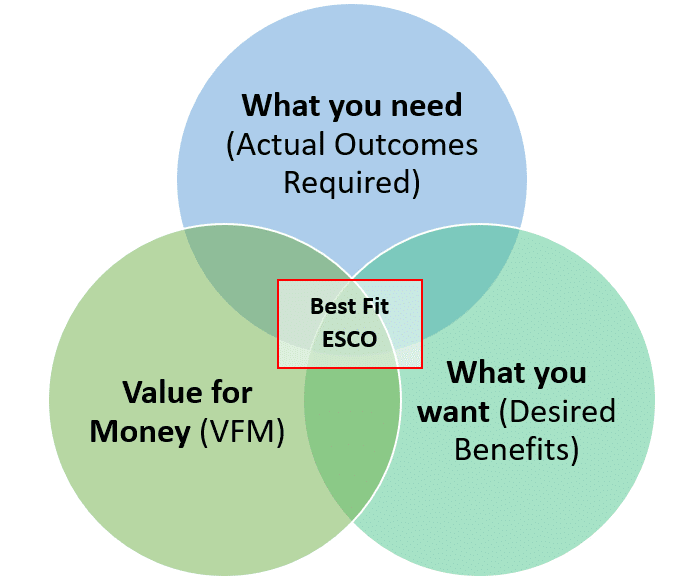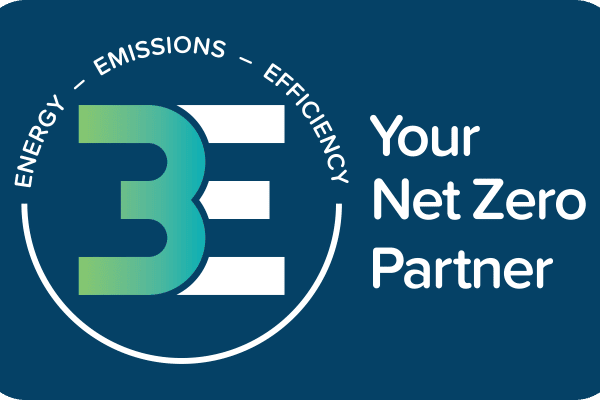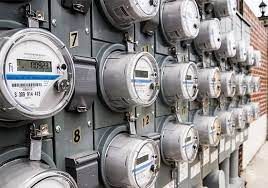In this article, we look at the five reasons why Government organisations should never select their Energy Services Company (ESCO) based on price alone .
When it comes to procuring an ESCO through a tendering process, some government organisations place a higher weighting on total implementation cost (price) and a lower weighting on other factors that contribute towards overall value for money.
From a Capital Expenditure (CAPEX) perspective, choosing the lowest cost provider has an immediate financial benefit. However, the lowest-cost ESCO may not be able to provide the same level of financial benefits (e.g. operational cost savings) and non-financial benefits (e.g. technical expertise, quality of products and workmanship, quality assurance, mitigation of health, safety and environmental risks etc) as compared to more value for money proposals by Tier-1 ESCOs.
Five reasons why Government buyers should never select their Energy Services Company (ESCO) based on price alone
1) You get what you pay for
The cheapest solution is usually not the best solution.
As with any other product or service, low-cost offerings tend to provide limited functionality, utility and benefit. Whereas value for money products and services offer additional features and benefits that may outweigh the marginal cost difference. This is where judgement and discernment comes into play.
Keep in mind, some ESCOs may be slightly more expensive than others but offer a lot more value through: additional services and solutions, ability to deliver superior cost savings and return on investment, industry knowledge and experience, technical expertise, reliability and track record, performance and savings guarantees, fixed-fee proposals and project costs, quality of advice provided, depth and breadth of service offerings, access to senior level resources, adherence to best practice frameworks, techniques and international standards; qualifications and accreditation relevant to the scope of the project, depth of organisational resources for contingency and business continuity; and overall reputation and longevity in the industry.
2) Solutions are not always fit-for-purpose
The lowest-cost proposal can sometimes mean that the proposed equipment for supply and install are not custom designed to meet specific requirements relevant to site conditions. That is because ‘off the shelf’ equipment and products are invariably supplied and installed without any consideration given to fit and finish, technical performance and overall lifecycle costs including ongoing maintenance.
While other ESCOs may propose a slightly more expensive solution, they can deliver a custom design solution with higher level of quality in terms of fit and finish, technical performance and lower ongoing maintenance costs.
3) Health and Safety, Quality and Performance risks
Price-driven tenders do not provide the ESCO with an incentive to deliver quality products and installation services from experienced professionals. In an attempt to ensure they win the tender, an ESCO may scope the solution and resource the project differently than compared to an Energy Performance Contract as an example.
The Energy Performance Contracting procurement process gives ESCOs an incentive to scope quality solutions to maximise savings and adequately resource the project to ensure savings guarantees are met. Recommended Reading: 7 Secrets to EPC Success
Choosing the lowest priced vendor may result in unintended consequences as price-driven tenders typically attract smaller lower quality ESCO that provide inferior product/equipment and workmanship to maintain their margins – this could lead to higher maintenance and repair costs for your organisation down the track.
Low cost vendors are also typically unable to provide adequate coverage in terms of managing health safety and environmental risks, insurances, particularly those ESCOs that are not accredited to ISO9001 Quality Management, ISO 45001 Health and Safety, ISO 31000 Risk Management and ISO 14001 Environmental Management.
Most lost-cost contractors are often unwilling to provide savings guarantees or other performance-based agreements. An ESCO that can provide a savings guarantee may carry a slight premium over other low-cost vendors, but it ensures that your organisation can achieve targeted outcomes whereby the ESCO bears all the performance and technical risks of the solutions they implement.
4) Reliability and Project Delivery risks
Some lost-cost contractors may not always be reliable in terms of implementing your project on time and on budget. To maintain their profitability and deliver low-margin projects effectively, a low-cost vendor may deliberately skimp on thoroughness, detail and level of resources utilised.
Choosing a vendor based on lowest-cost price alone is also a risk as some vendors are struggling to sustain low prices and are at risk of trading insolvent and closing doors due to intense competition and price-driven tenders. As an example, several large solar company have recently gone into voluntary administration because they were unable to sustain increasingly slim margins. You can imagine the impact that would have on projects that were in the process of being delivered.
Larger, more established ESCOs with a long history in the market and track record of successfully delivering similar projects, are sometimes more expensive than other contractors with not as much experience or track record. In that sense, it’s worth paying slightly more to engage a trustworthy ESCO that represents the least risk and quickest time to effective implementation choice.
5) Inability to scale to meet your future requirements
Low cost vendors that offer you cut price design and installation services for the immediate project, but they may not be able to offer you a depth and breadth of services and solutions that can meet any future requirements you may have. This is particularly important when there are multi-phase projects or an entire portfolio rolled out over a period of time.
Rather than choosing the lowest-cost contractor meet the current requirements, there are considerable benefits to partnering with a single ESCO that can deliver every phase of your project as well as any future needs that may arise.
It’s important to adopt a holistic approach to evaluating value for money and take all elements of a tender submission into account. While Price is an important aspect to consider, it should not be the determining factor that guides procurement decisions.
Value for money (VFM)
Value for money cannot be defined solely based on price. The term ‘value for money’ (VFM) means different things to different people. But as a government buyer, you should always take a big-picture view when selecting an Energy Services Company (ESCO) to deliver energy saving solutions through energy efficiency retrofit upgrades or other energy related services.
Value for Money is the achievement of a desired procurement outcome – at the best possible price – not necessarily the lowest price. VFM is determined on a balanced judgement of financial and non-financial factors relevant to the project.
It’s not just about securing the lowest price or the highest quality.
If you have limited funds, you may find a low-cost option that meets your minimum quality requirements is enough. But you always need to consider the value over the goods or services’ entire lifetime. This includes everything from upfront installation or construction to maintenance and exit costs, as well as indirect costs and benefits.
For instance, when it comes to energy conservation measures, you can deliver economic value through operational cost-saving innovations or downstream job-creation.
Most government organisations have procurement guidelines, policies and protocols that explicitly defines VFM criteria, representing multifaceted benefits or outcomes beyond price-driven considerations. VFM takes into account local benefits in relation to economic, environmental and social impacts resulting from a procurement decision.
The below diagram is an example of some of the elements of VFM that may be considered – the point being that VFM is more than just about price.
Once you have evaluated proposals from different ESCOs and shortlisted those that provide superior VFM, then you need to have a clear understanding and distinction between what you need in terms of achieving certain project outcomes, versus what you want in terms of desired benefits and weighing that up against the ESCO that can provide both whilst meeting your VFM criteria. Best practice procurement ensures that these requirements are defined early in the procurement process.








